Garmin, Raymarine, and Simrad enclosed radars compared, part 2
Part 1 of my radar comparison generated a good discussion about the results and highlighted some opportunities to get back out on the water and complete some additional testing. I’m back with part 2 and the results of that additional testing. I’ve been able to test some additional scenarios, different settings, and more features of all three radars.
Gain on Garmin Fantom 18x
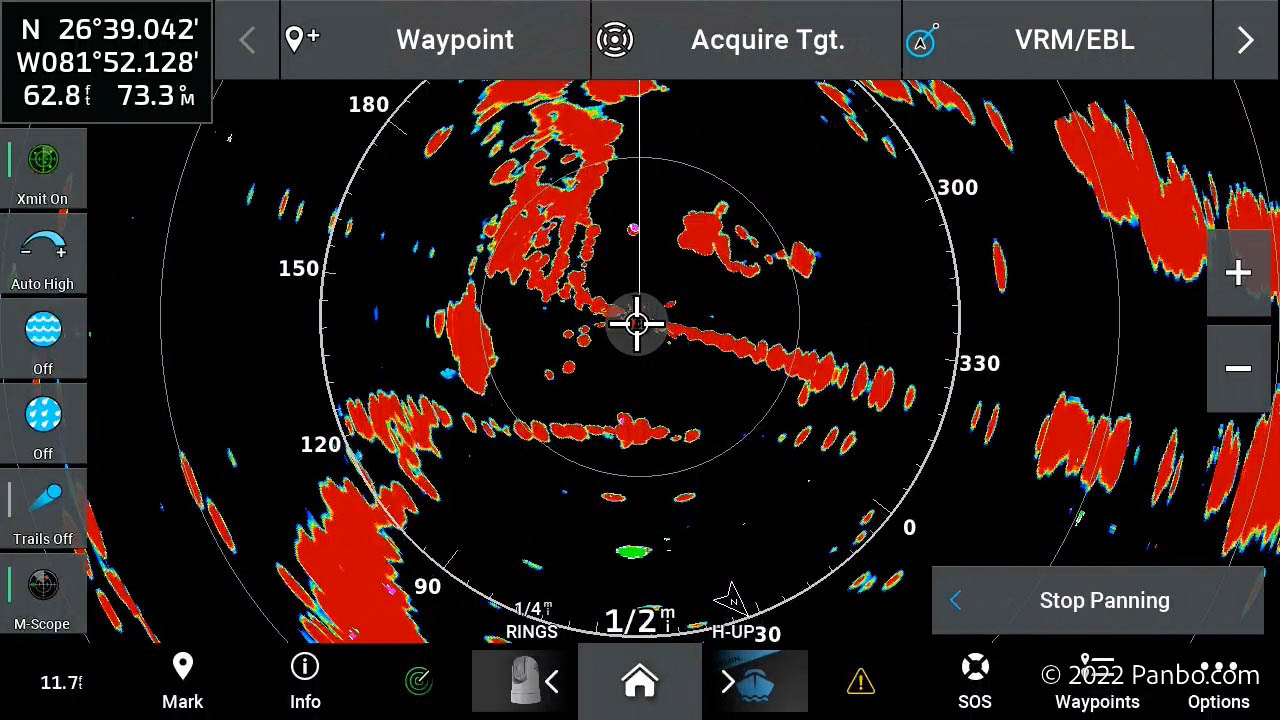
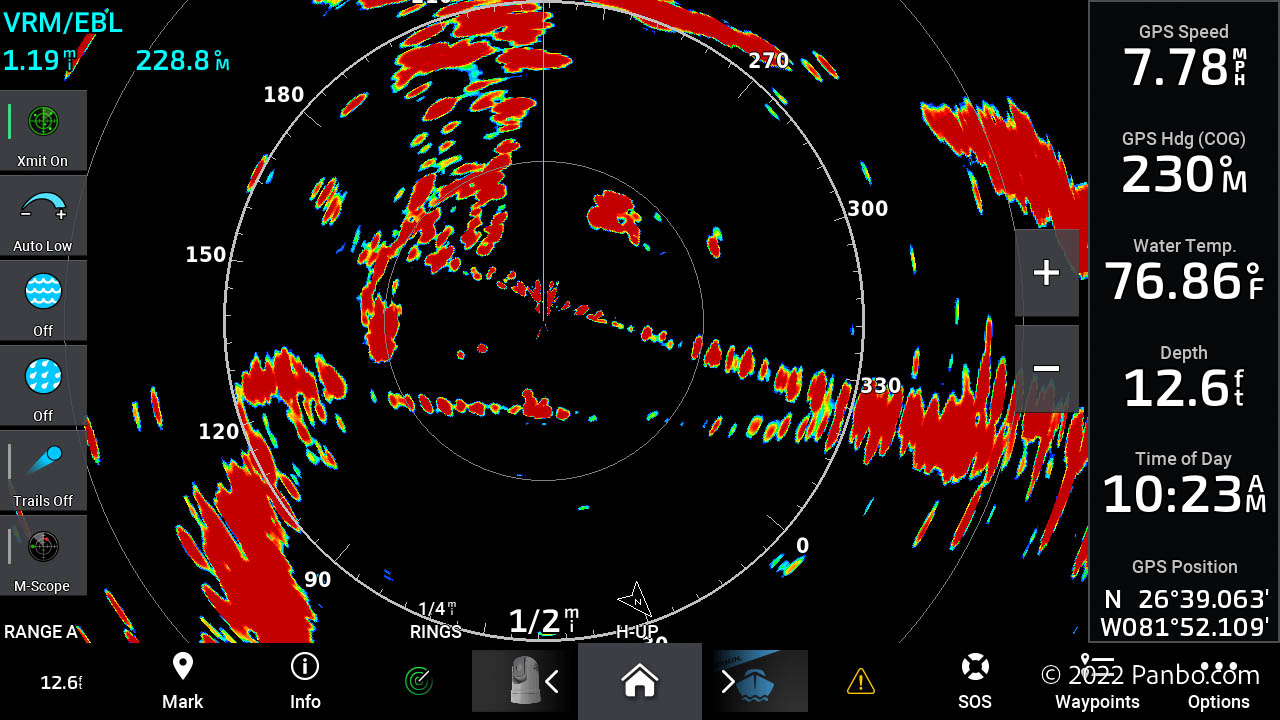
Unlike the other two radars, Garmin’s auto gain settings can be set to low or high. By default, the harbor preset uses auto low gain. For the first set of testing, I didn’t override any of the defaults of the respective presets, except for range, so that all screenshots matched.
This time around, I did change the Fantom 18x to auto high. The vast majority of this round of screenshots are in auto high. I did see some exaggeration of targets with higher gain, but overall, I think it’s an improvement. The screenshots above show auto high (on the left) and auto low (on the right) in nearly the same position.
Downtown Fort Myers round 2
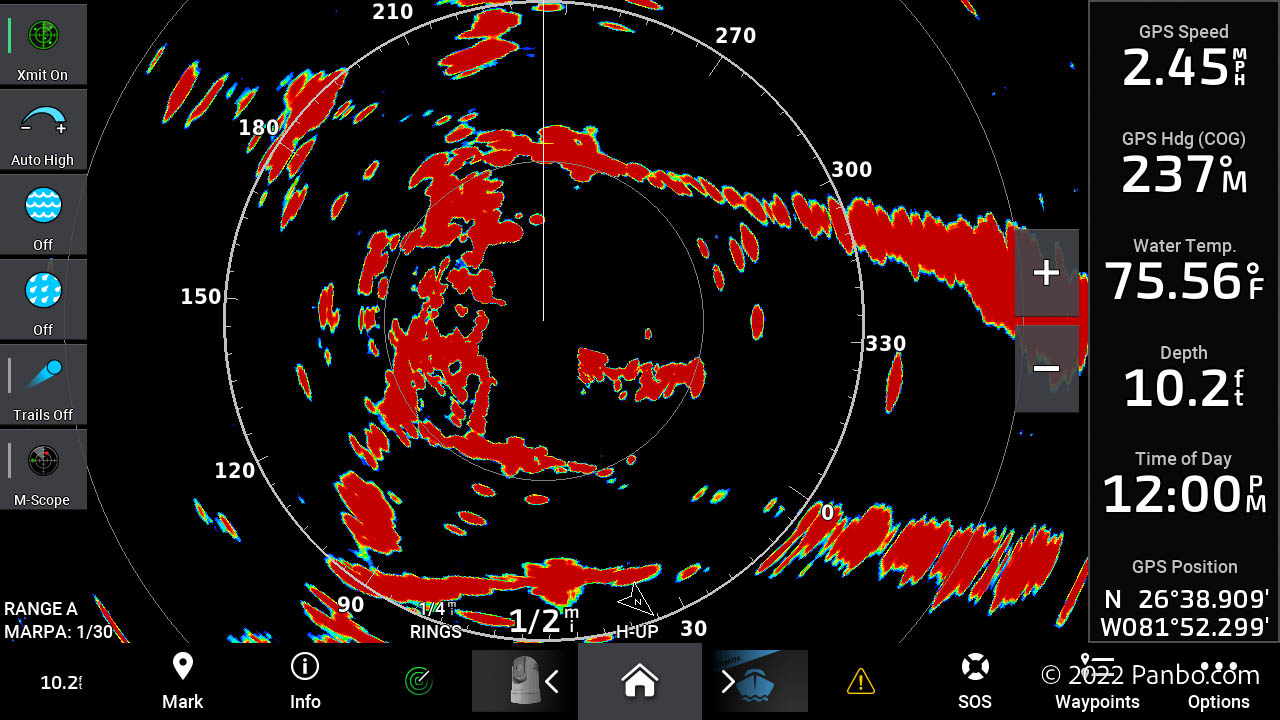

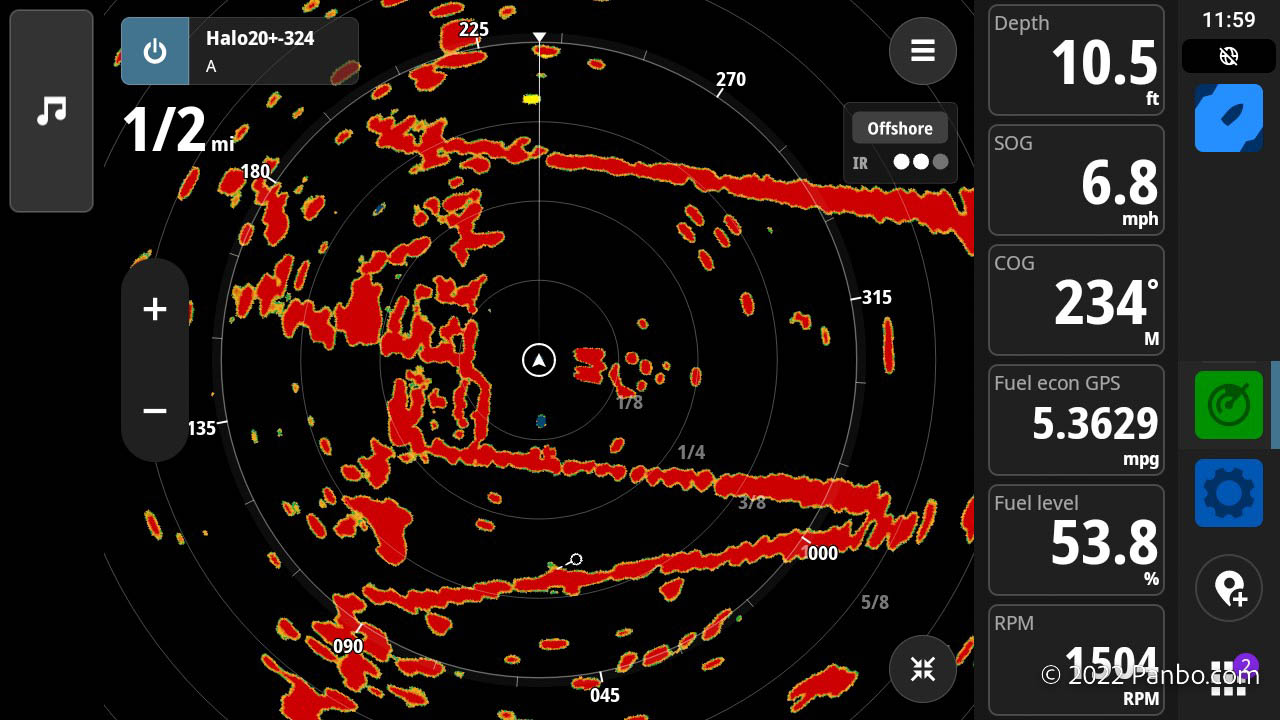
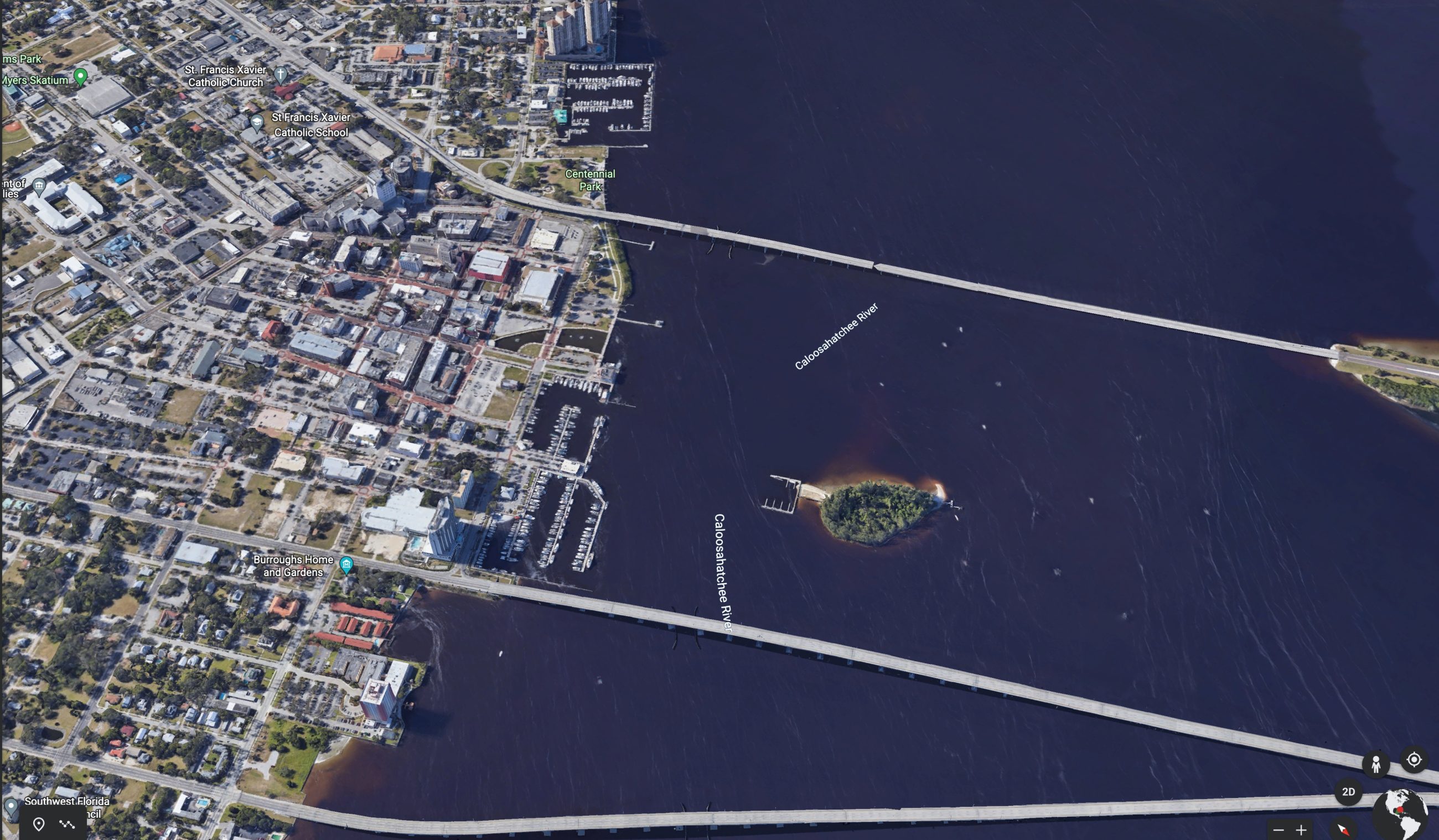
This comparison is very similar to one from part 1, but this time with the Garmin in auto high gain. Also, you may have noticed I made a mistake by leaving the Simrad in its offshore preset rather than harbor. Although the Halo 20+’s performance may be slightly compromised, it still shows quite well. In fact, I think I’d still rank its return first, followed very closely by the Fantom and then the Quantum 2.
Dual-range

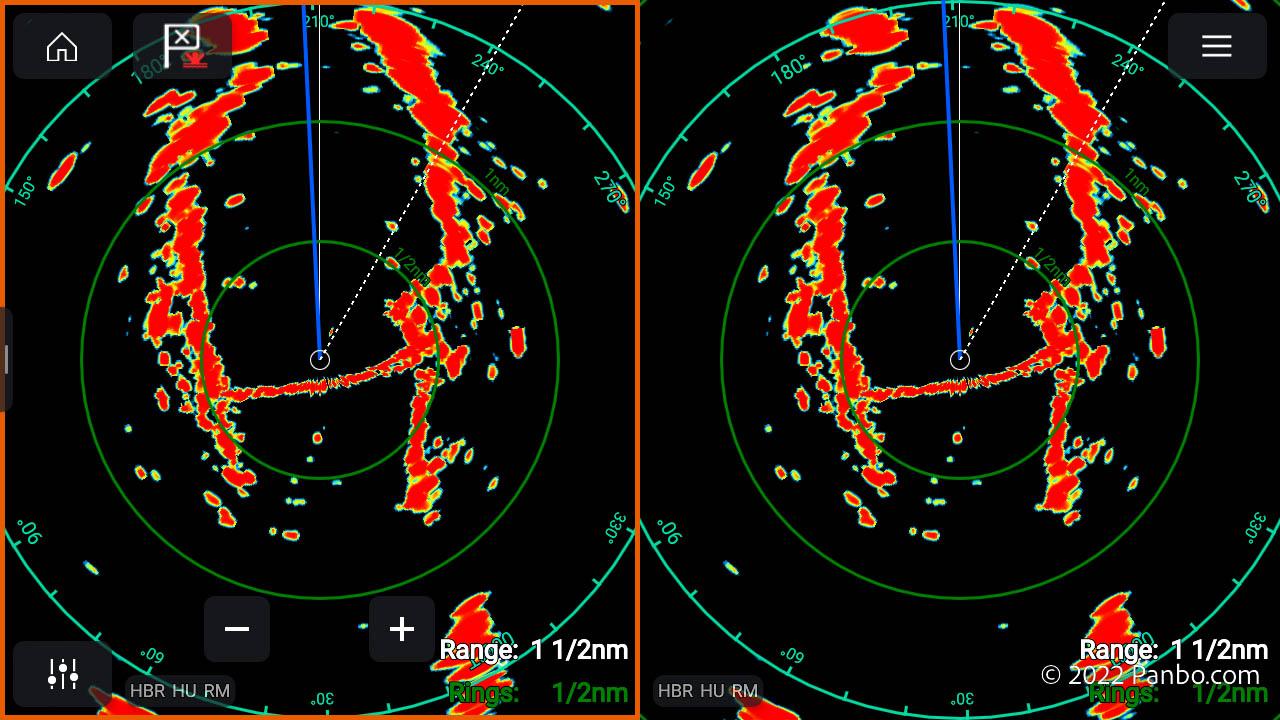
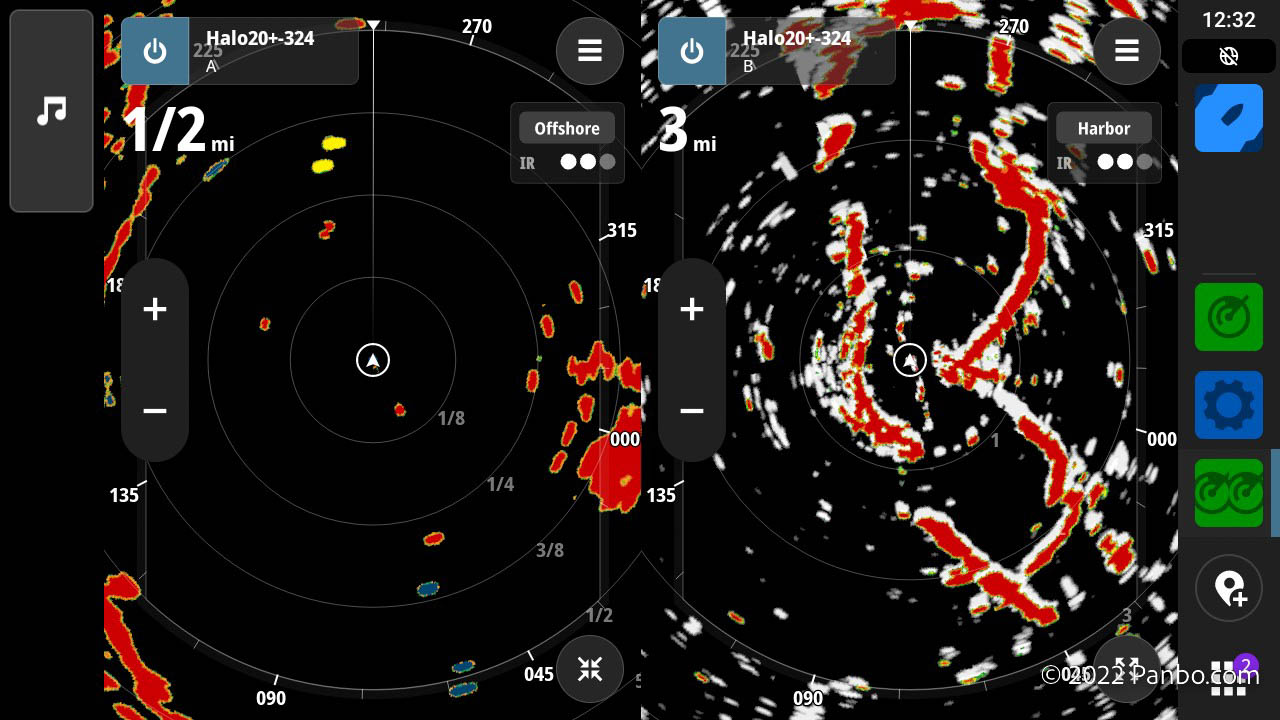
The Garmin Fantom 18x and Simrad Halo 20+ both offer dual-range capabilities. The Halo 20+ presents the two virtual radars as nearly entirely separate units. Each virtual unit can be powered up and down individually and all adjustments except rotational speed can be independently controlled. Garmin doesn’t create two virtual radars, but does allow nearly all parameters to be adjusted individually.
Bird mode
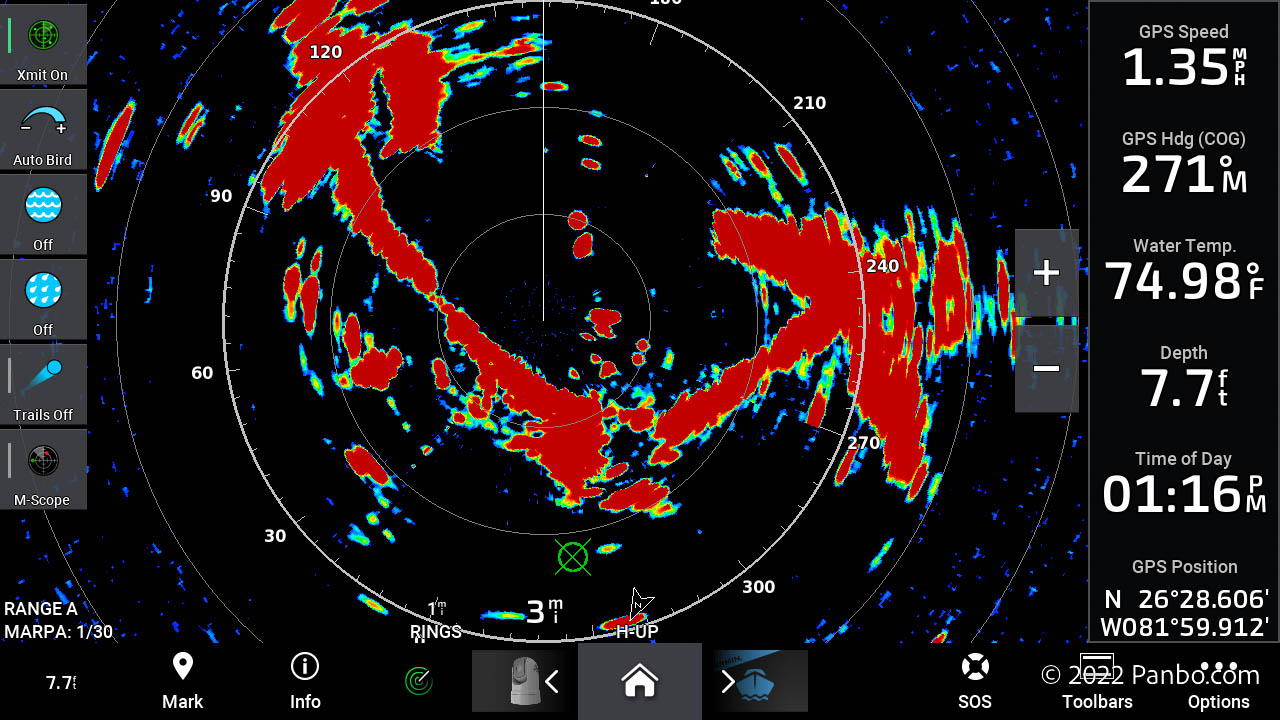
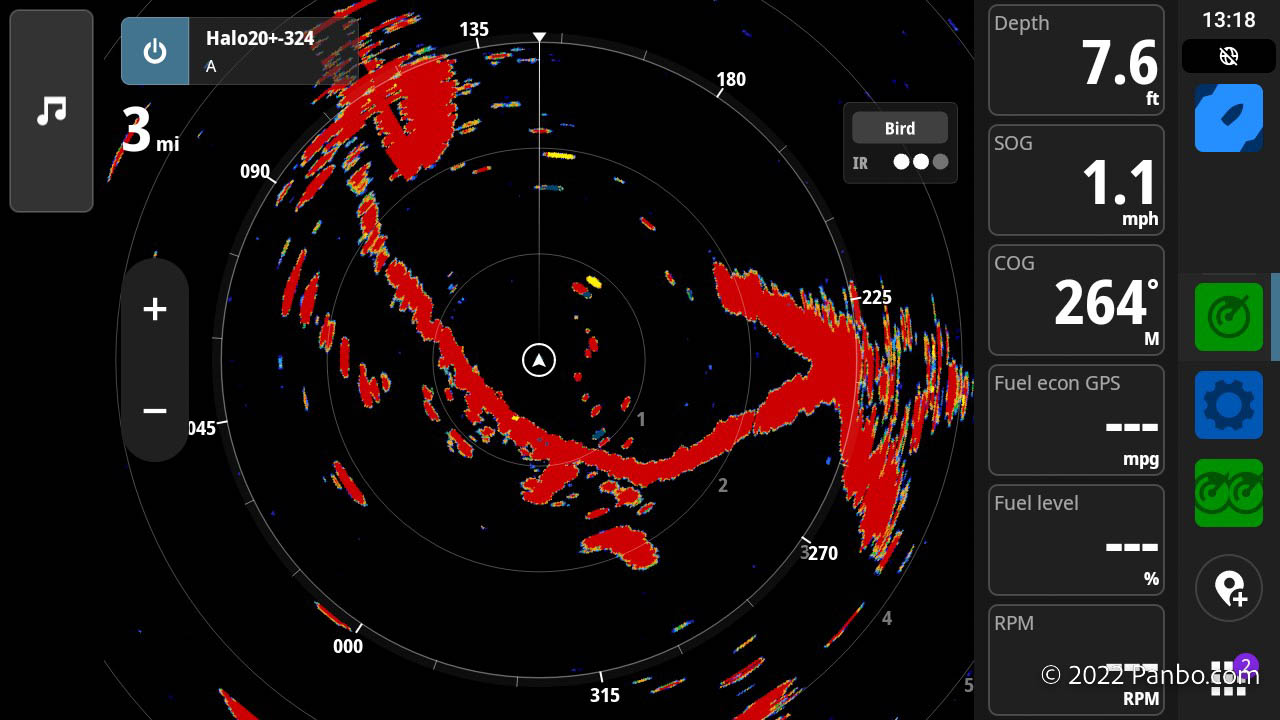
The Garmin and Simrad radars both offer bird mode. Circling birds are an indication of bait fish forced to the surface by larger predator fish. Those predators are often just what anglers are after. So, the idea is that if your radar can help you spot birds, you can put yourself on fish. I spent a while trying to tune both the Simrad and Garmin units to show me birds with very little success. One time, I got a few fluttering returns from a large flock of birds. Overall, I got the impression that the relatively low power — compared to larger open arrays, whether solid-state or magnetron based — of the enclosed arrays makes detecting birds a reach.
Radar overlay
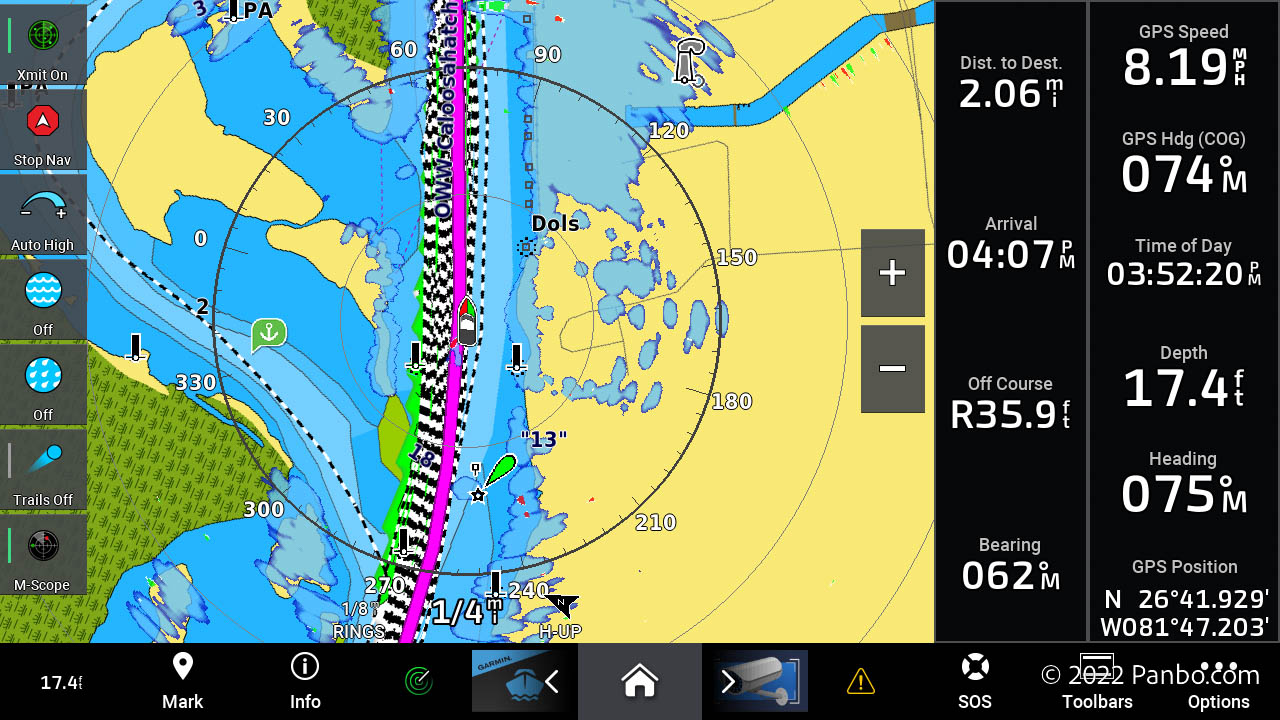
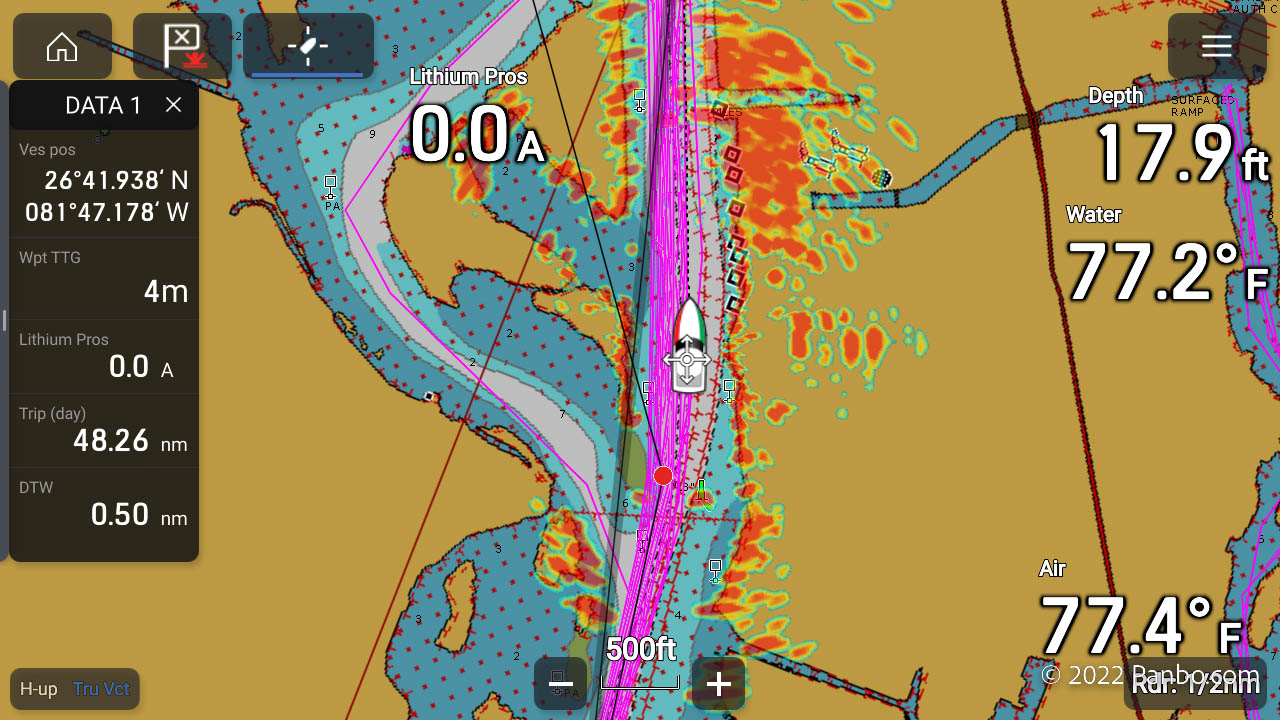

Some boaters swear by radar overlay as a great way to maintain situational awareness. I’ve never found it particularly helpful and believe I miss many more radar returns in overlay than I do on a traditional scope. I suppose it all comes down to personal preference. But, I found a big difference in the ease of interpreting the returns from each radar unit when overlayed on a chart. The Raymarine and Simrad returns were both easy to spot and pretty clear. In contrast, my GPSMap 943xsv defaulted to a blue color palette for radar overlays. I found this color very difficult to spot.
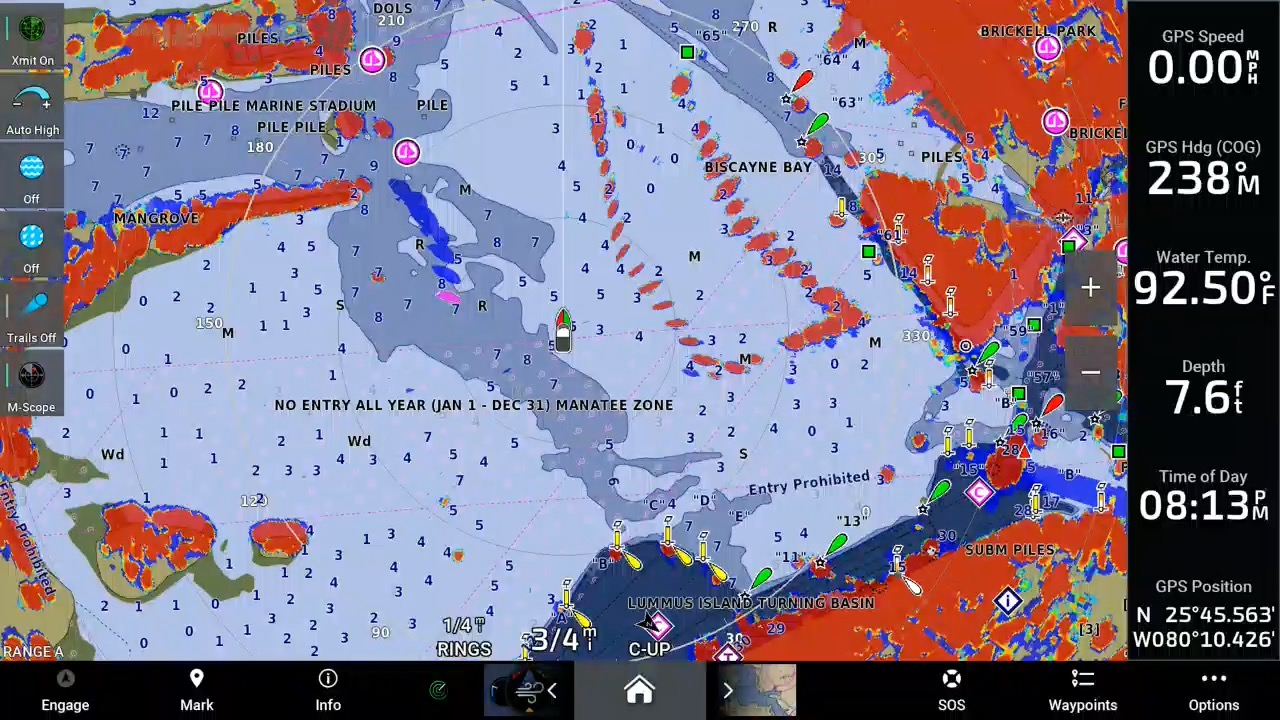
Although the default blue was tough for me to spot, there are options. Fortunately, the color is selectable. I’ve selected red in the screenshot above, and it’s much easier to see.
MARPA and AIS display
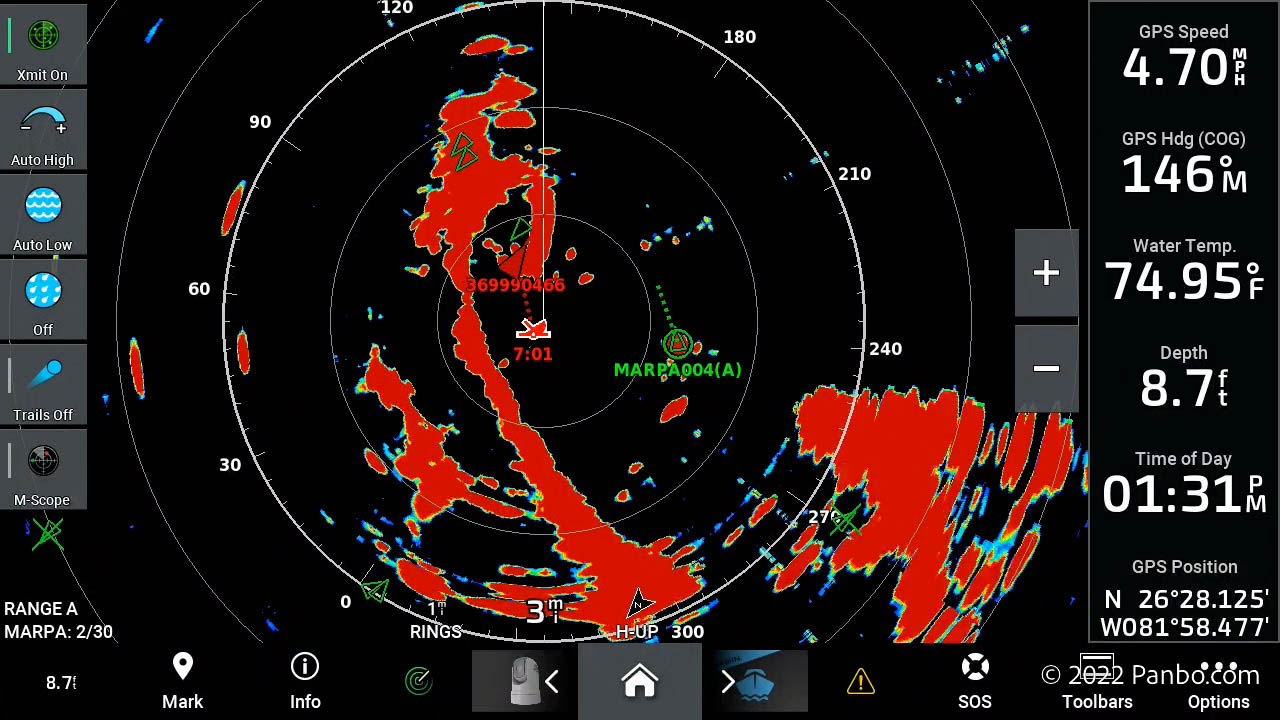

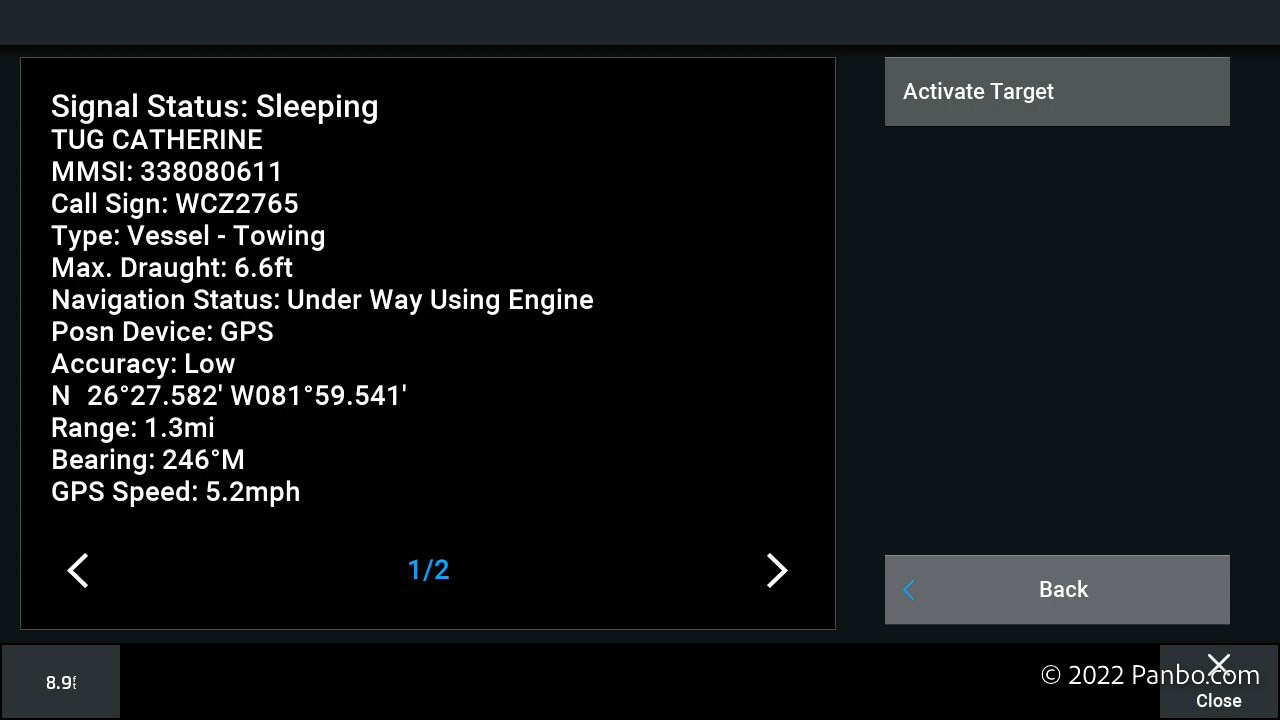
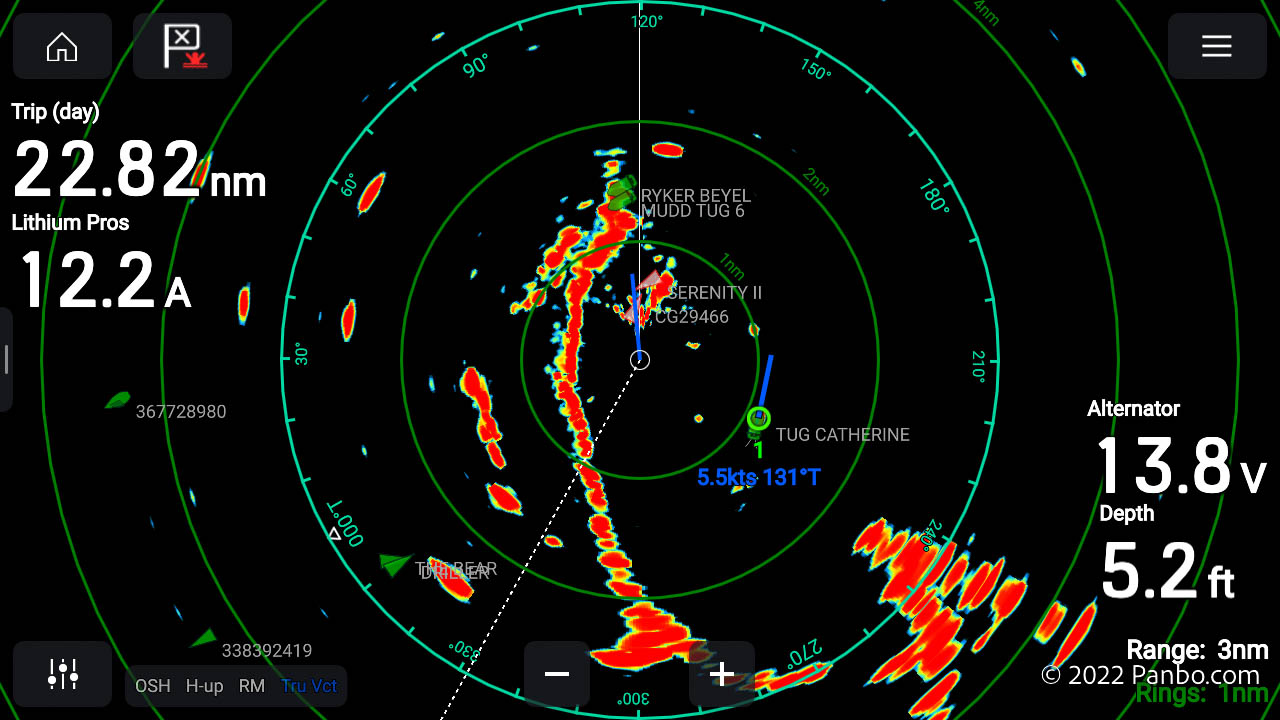
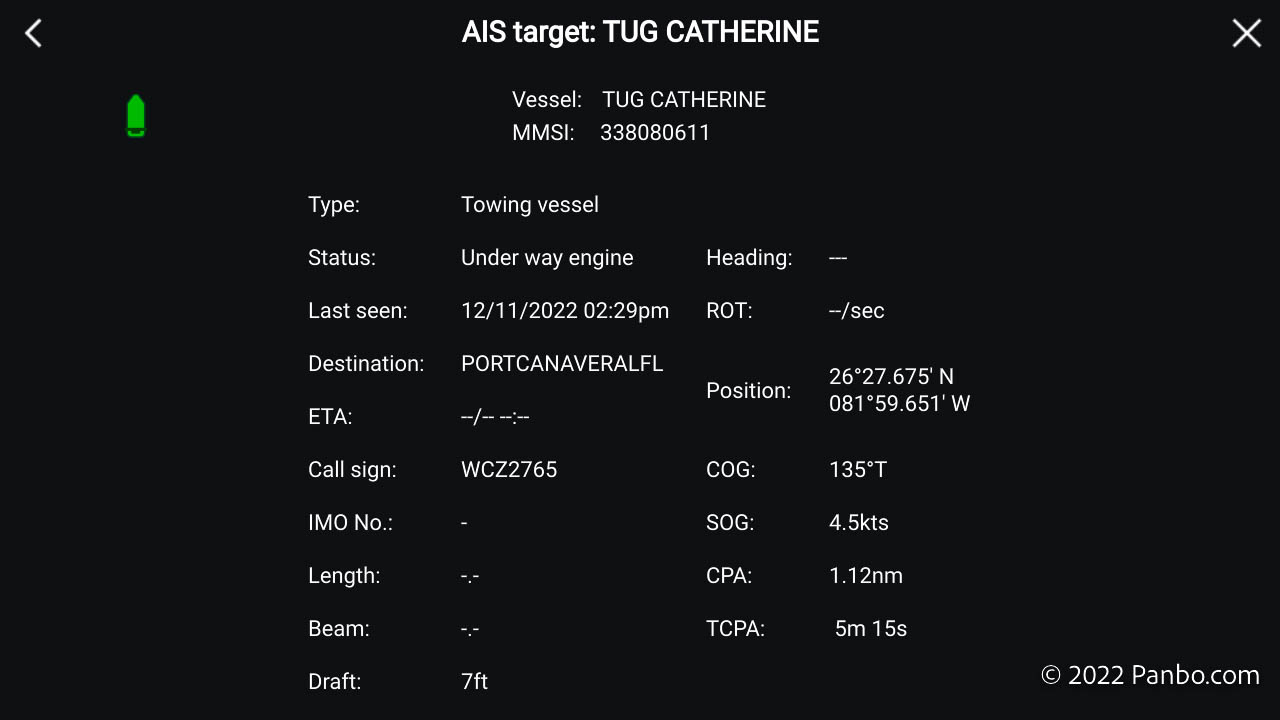
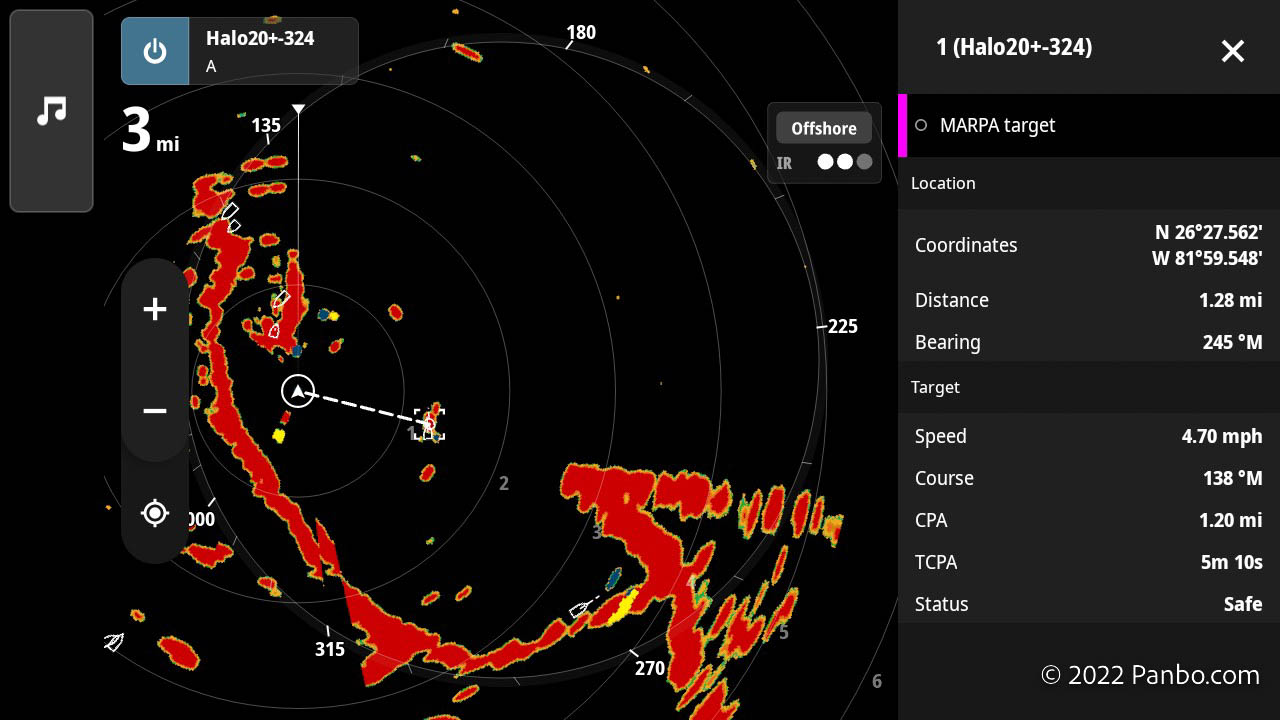
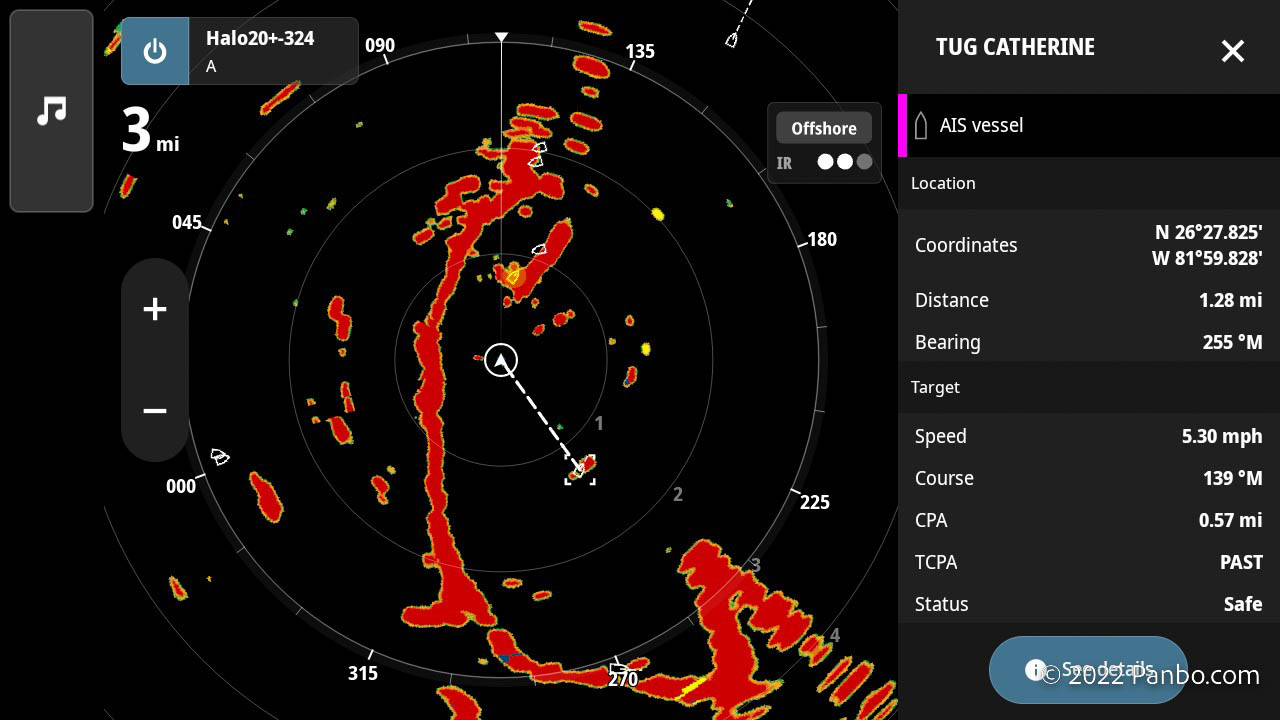
When paired with a heading sensor, each of the three radar units supports MARPA or miniature automatic radar plotting aid. MARPA provides information about the speed, heading, relative bearing, distance, closest point of approach (CPA), and time to closest point of approach (TCPA) for tracked targets. For my testing, all three radars and displays used the NMEA 2000 heading output of a Garmin MSC 10 satellite compass. I’ve found this compass to provide rock-solid heading data, so I think the displays were all getting good heading and position information.
As you can see in several of the screenshots above, MARPA and AIS symbols are often overlayed directly on top of each other. The two technologies complement each other and provide confirmation of the data each provides. For AIS equipped vessels, I typically didn’t find it necessary to acquire them via MARPA. But, it’s not uncommon to see AIS targets with incorrect heading data. In those cases, acquiring the target via MARPA provides correct heading information on the vessel.
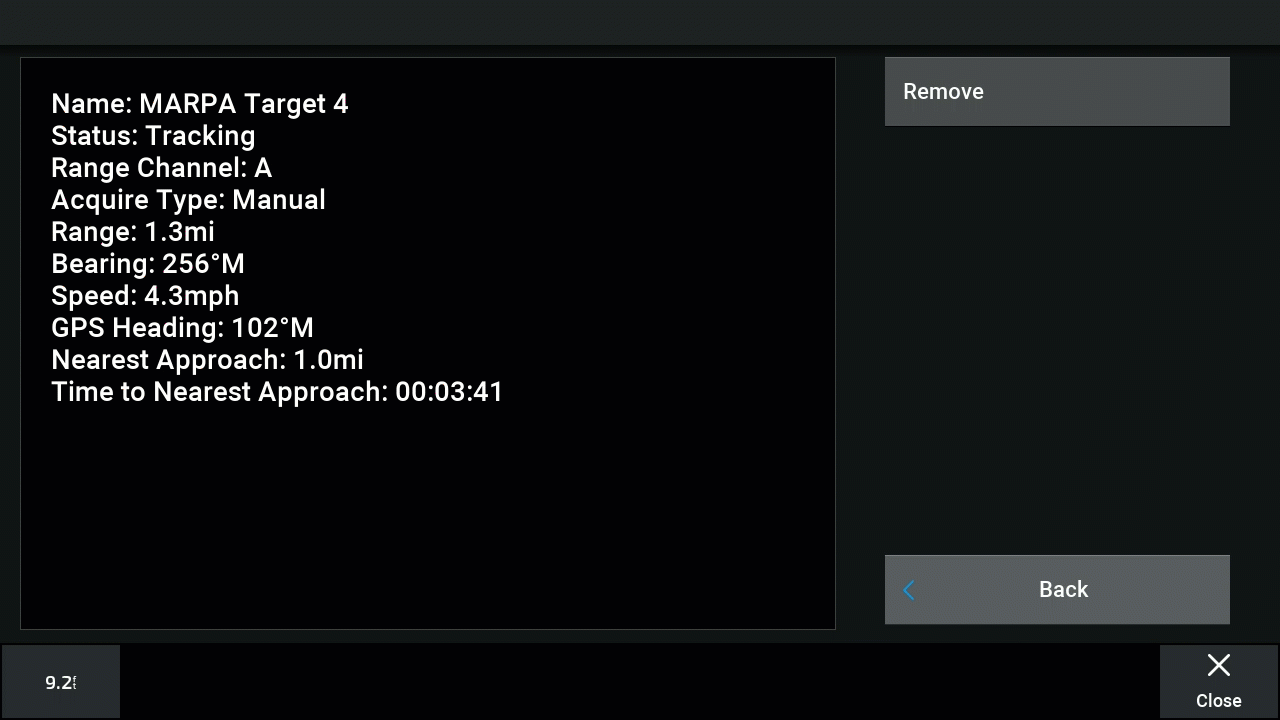
All three radar units occasionally had trouble providing accurate speed and heading numbers. The snippet above from the Garmin radar shows speeds varying from a relatively accurate 5.2 mph all the way up to over 25 mph. The target tracked in the video is the Tug Catherine from the previous set of screenshots. Safe to say, the tug and barge weren’t actually traveling at 25-plus miles per hour! In addition to these errors, I watched all three radar units struggle to track MARPA targets around large fixed objects. This was especially acute as tracked targets passed under bridges. I often watched the MARPA target circle move from a moving boat to a portion fo the bridge as the boat passed under the bridge.
Raymarine doppler presentation

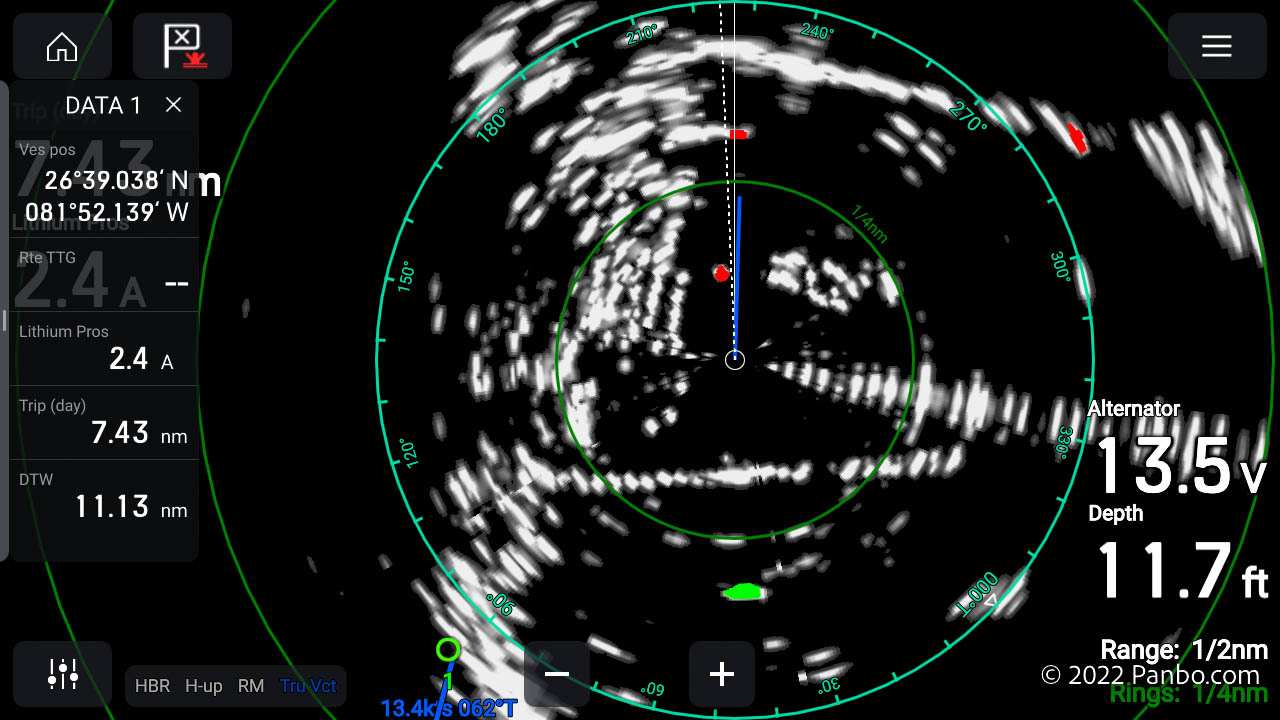
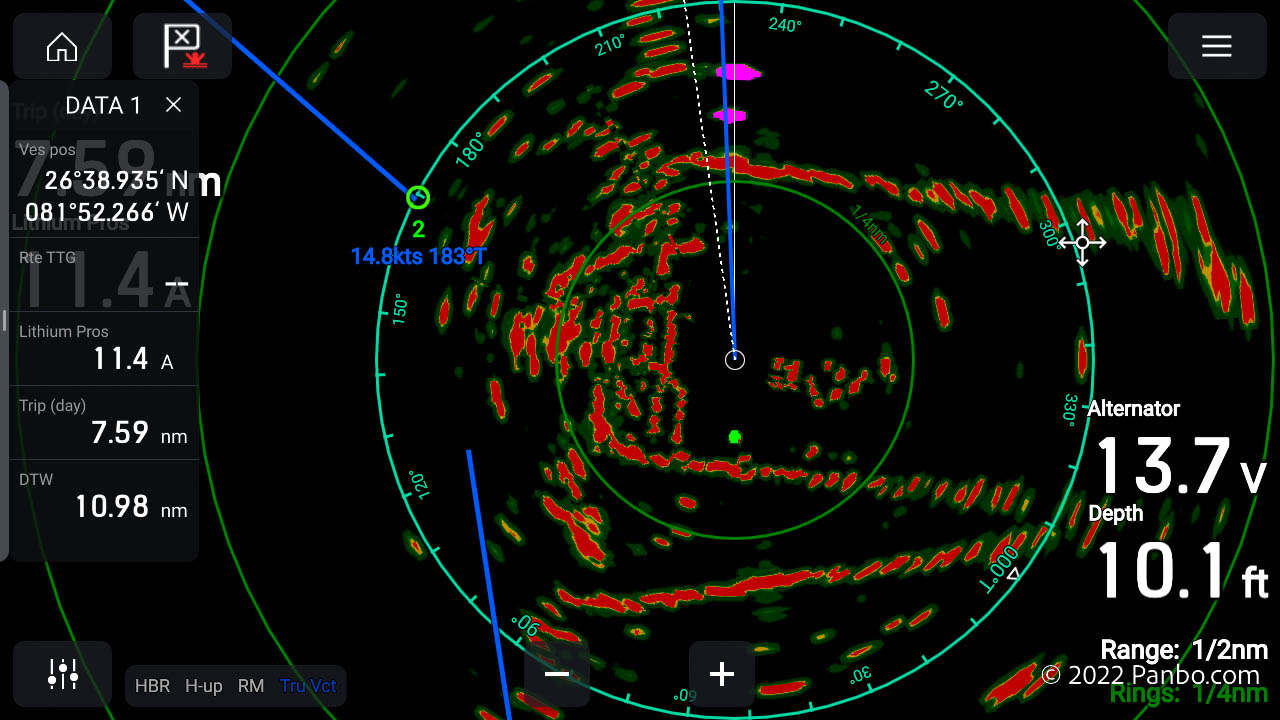
In my first comparison entry, I noted that Raymarine is the only one of the three radars to change the presentation when doppler mode is enabled. I only included a screenshot of the white doppler color palette, not the full-color one. As you can see above, even when the full color palette is selected, the colors are more muted, and to my eye, there’s less clarity in the non-doppler returns displayed. I’m hopeful a future update might allow the same presentation on Raymarine systems.
Final thoughts
I’ve enjoyed the conversation generated by my first comparison entry. If there’s anything I haven’t covered above that you’d like to see, please speak up in the comments below. Unfortunately, I wasn’t able to cover echo trails as I would have liked. I collected quite a few screenshots of each radar’s echo trails but I wasn’t happy with them. I plan to try again the next time I get out on the open water.
My final thought after spending many hours comparing these radars is this: There are differences in how each radar unit perform at different functions and in different circumstances. But, in any of these situations or circumstances, I would confidently go to sea with any of these units.



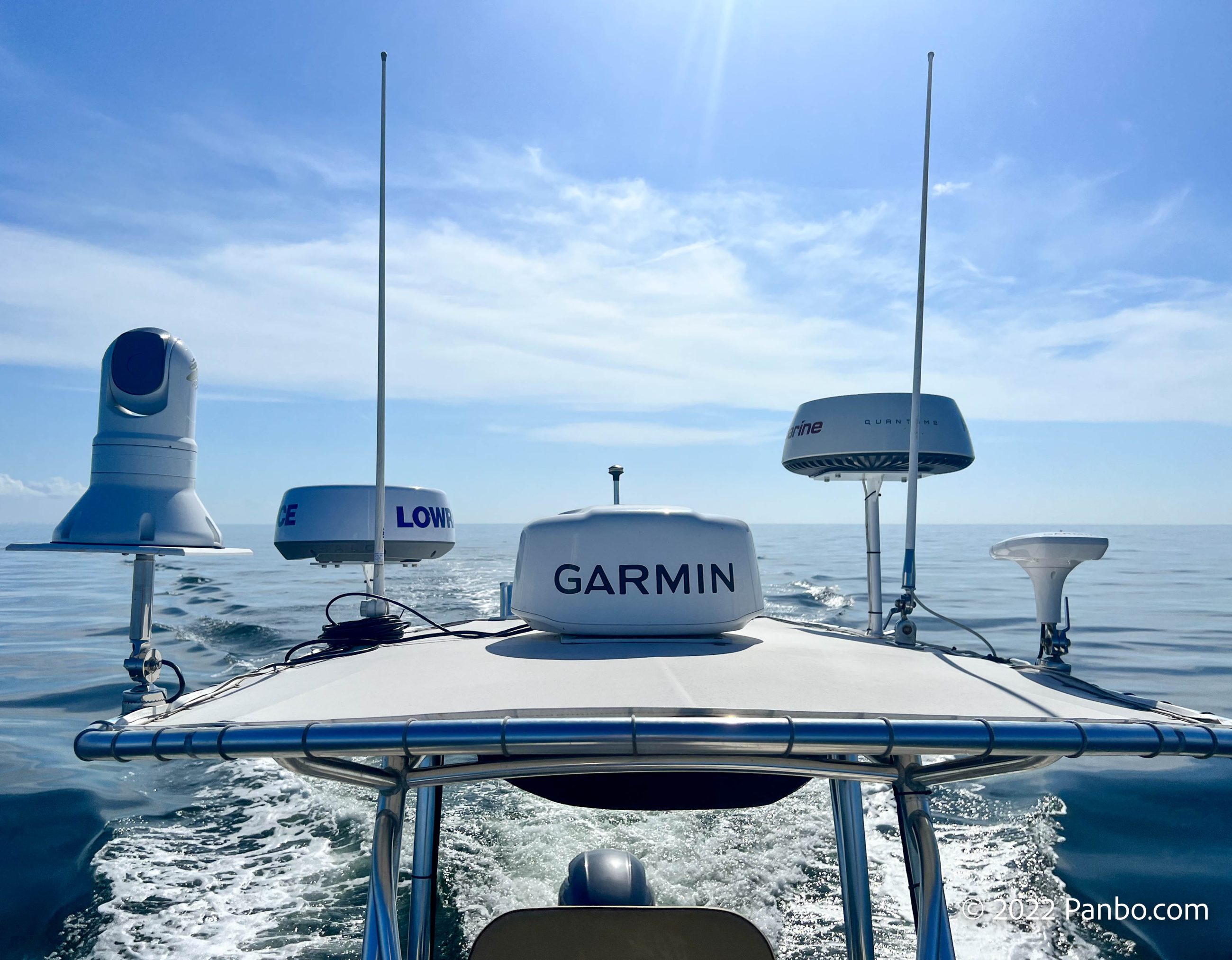









Thanks John, your analysis is vry appreciated. What I would like to see is to see how these radar perform with Iceberg, can they see them at all. I realized that you won’t see iceberg were you sail, but if anyone could share there experience with iceberg it would be very appreciate.
I would love to see if anyone else can provide images of how ice returns show up on these radars. I don’t suspect I’m going to be much help with that unless our weather extremes get a lot more extreme.
-Ben S.
Hi Ben! Excellent info! I share your feelings regarding radar overlay onto the chart – for open water and tracking rain, the overlay mode is quite useful, but if you really need to see approaching targets, a separate display is imperative! Our (now antique) e95 plotter/display puts the radar return in magenta, which seems quite visible – but its still VERY easy to miss small targets like approaching fishing skiffs and Maine lobstermen in the fog.
Hi Ben, You did a fantastic report in your radar Part 1_2 reports. I know how hard it is to compare due to installation and setting differences. Just a comment……next time out please try for some some longer range performance screenshots – perhaps 16nm or greater. This is a poor time of the year to see rain cells, but maybe some will pop up. Doppler coloring in rain cells in very important. Happy New Year.
Hi Don, Great to see you pop up on Panbo. I remember well when you demoed the very first recreational solid-state radar:
https://panbo.com/navico-broadband-radar-beta-demo/
Hi Ben,
I use radar overlays to make sure the charts are correct! I am circumnavigating and have found that charts can be off a bit! I am using B&G with both Navionics and Cmap chips. I also run OpenCPN with satellite charts and AIS overlay on a 19″ PC at the chart table. The radar overlay has proven that the charts are off on a few occasions and that the satellite charts are usually spot on! Offshore at night I switch to radar only mode every 1/2 hour or so to insure I don’t miss a small panga 150 mile out fishing!!
For Halo radars I strongly recommend using Harbour mode unless you are far offshore and not interested in land details, man made structures or good target resolution. In Harbor mode Halo dome radars have the beam sharpening set to Medium, in offshore mode it’s set to Off. This makes a big difference in resolution. The offshore mode is optimized for wave supression offshore. Another tip is to utilize the Calm, Moderate and Rough sea state settings of the sea clutter filtering. Moderate is default, at calm seas Calm typically gives better performance and when there rough waves you may have to go to Rough to clean up the image.
Another excellent effort at providing realistic and objective comparisons. The good news is that they all work pretty well. I had to laugh reading of your struggle to use these small domes to show birds because it gave me the impression that you were able to see the birds with your naked eyes but not on the radar display. Of course the point of using radar to find birds is to do it beyond visual range. The high power open arrays that I have had on my boats can usually spot birds well over four miles away and even double that when calm and there are flocks. I don’t think anyone should expect to see many birds with a small dome.
It is unfortunate that you were not able to test a Furuno dome as well. Their products seem to do certain things much better than the others such as ARPA for one.
Fred,
I definitely agree that it’s unfortunate I couldn’t get my hands on a Furuno radar dome as well. I expect that it would have been extremely competitive and likely outperformed in some areas. I still hope to be able to get one at some point. When I do, I’ll update the results.
As for spotting birds… I think the domes outperformed my eyes, but I was able to better trust the results from my eyes. In cases where I could see birds, I could often then find the returns on the radar scope, but they weren’t consistent enough (even understanding bird returns are typically hit and miss) to be confident based just on what I was seeing on the scope. It was common to see the birds returned once, then have multiple passes (maybe as long as 10-15 seconds) without the birds being visible, then see them again. These were at relatively short ranges. I got the sense the returns were weak enough that even with it dialed down, the radars’ signal processing was filtering them right out.
-Ben S.
Help !
Most literature says that Solid State Radar units DO NOT have a magnetron.
Yet RAYMARINE website says that both of their “solid state” radars DO HAVE a magnetron. Here is a clip:
Transmitter
Transmitting Frequency: 9405 +/ 25 MHz
Peak Power Output: 4.0 kW (nominal)
Transmitter:/ Solid-state modulator driving Magnetron
Standby Mode: Magnetron heater and control left on, all other services off
Duplexer: Circulator
So are the choices 1) magnetron, 2) Solid State with magnetron, 3) Solid State with NO Magnetron?
Curt, I think they’re either solid state or magnetron, but I’m quite curious where you found that clip?
Here’s what I see for the Cyclone models Transmitter detail, and the Quantums look similar with even lower power outputs:
Transmitter frequency: 9370, 9400, 9430 MHz (User Selectable)
Peak power output: 55 W
Peak power output: 110 W
https://www.raymarine.com/en-us/our-products/marine-radar